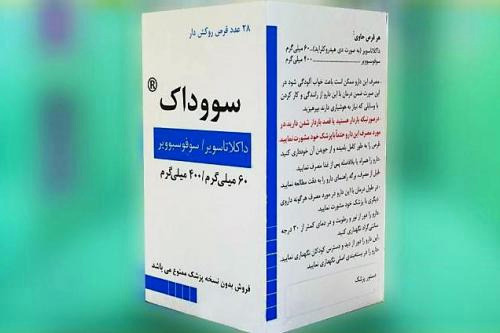The Hepatitis C Treatment Study in Iran

The Hepatitis C Treatment Study in Iran is one of the most important research studies conducted by the Digestive Diseases Research Institute (DDRI) which resulted in an important achievement with regards to the definitive treatment of hepatitis C in the country and the survival of hundreds of patients
Hepatitis C is a liver disease that affects the liver, the largest and most important internal gland of the human body, which disrupts important hepatic functions, including the elimination of toxins, the production of vital proteins, the regulation of blood glucose, the metabolism of lipids, and the production of certain essential hormones.
Hepatitis C infection manifests various clinical signs and symptoms: the illness to recovery phase in acute hepatitis C lasts less than 6 months from the time of infection with the virus; during this time, damage to the liver is completely recovered, and the viral load in blood is cleared; while in chronic hepatitis C, inflammation and damage to the liver lasts more than 6 months and requires further treatment.
Hepatitis C, in most cases, has no symptoms and can appear as a simple cold. The virus is often transmitted through blood; however, unprotected intercourse and fetal-placental circulation are other ways in which the disease is transmitted.
In Iran, more than 200,000 individuals are infected with hepatitis C.
The treatment of hepatitis C in previous years with interferon and ribavirin has been accompanied with numerous adverse effects and is a lengthy process (24 to 48 weeks), with a definitive treatment rate of only 50%. With the production of Harvani in the United States, a revolution occurred in the treatment of hepatitis C, which could treat patients within 84 days. However, treatment with this medication was extremely expensive, and the success rate for treatment of patients with genotypes one and three of hep C in Iran was only 50%, because it is manufactured in the United States and the patients in this country are mostly affected by genotype one.
Hence, the researchers at the DDRI of TUMS, after three years of clinical and laboratory research, succeeded in producing a highly effective combination drug against hepatitis C which has undergone the clinical phases and been introduced to the pharmaceutical market of the country under the brand name of Sovodak.
Sovodak, which is a combination of sofosbuvir 400 mg / daclatasvir 60 mg, cures 98% of patients with Hepatitis C over a period of less than three months with a dosage regimen of one tablet daily.
Advantages of Sovodak:
1. No need for simultaneous use of an interferon drug
2. Effective against all genotypes of the hepatitis C virus
3. Effective against advanced cases (cirrhosis) or in patients who have not responded to other medications
4. No significant drug side effects
Currently, Sovodak has entered the pharmacopoeia of Iran, and the manufacturing license has been received by the knowledge-intensive enterprise of “Fanavaran Rojan Mohaghegh Daroo”.
The drug has rapidly and definitively cured thousands of patients with hepatitis C at a cost of 2 million Tomans for a complete recovery cycle of three months.

comment